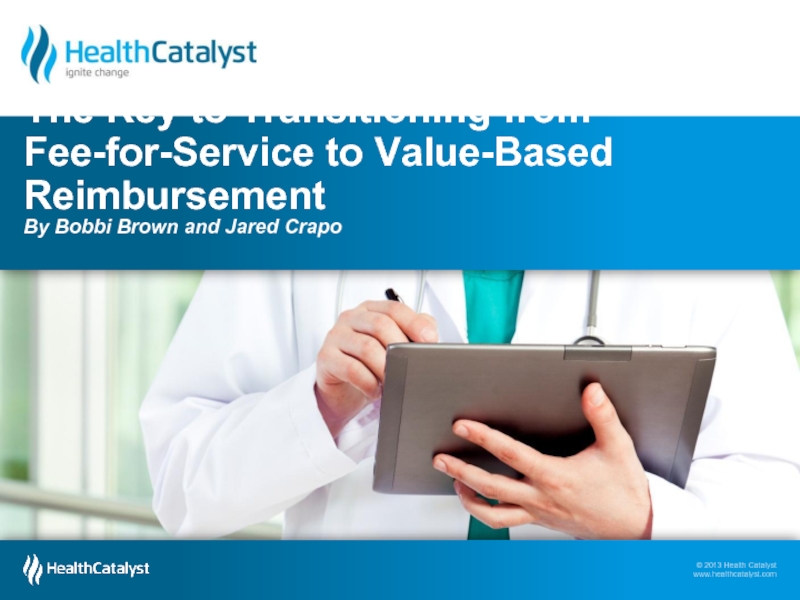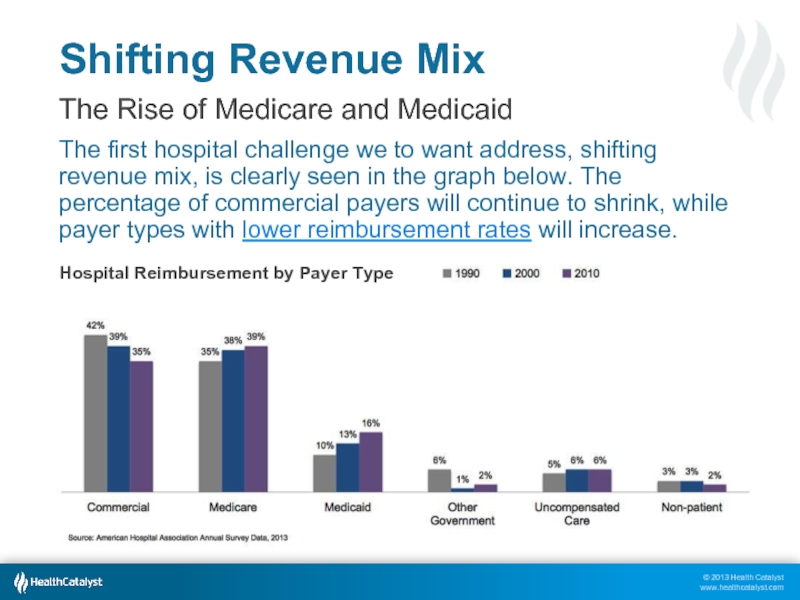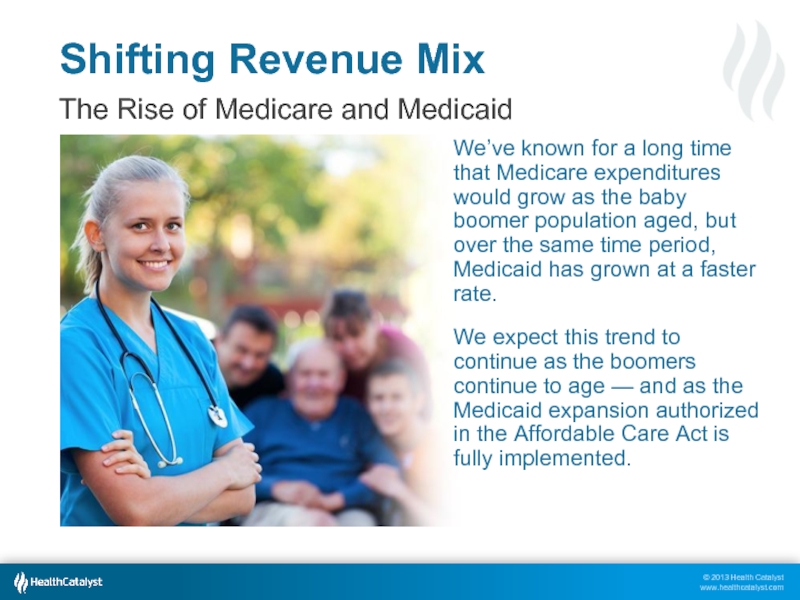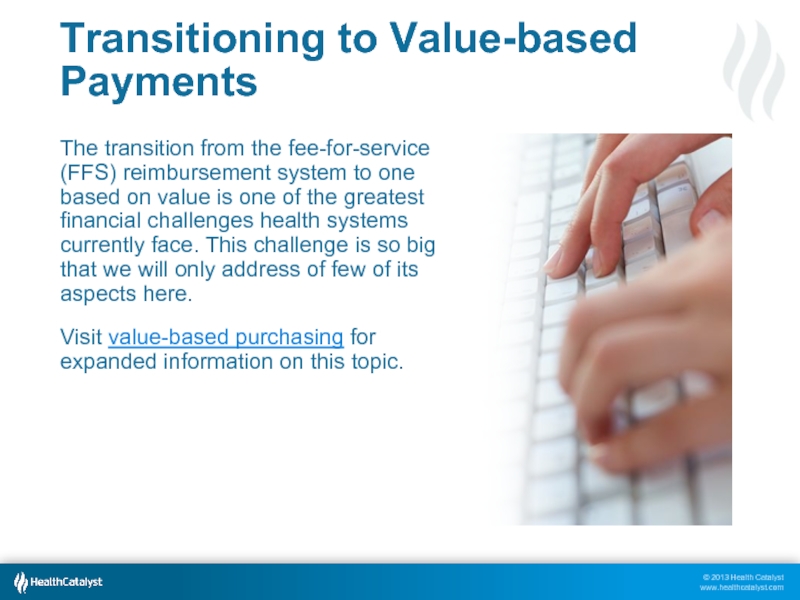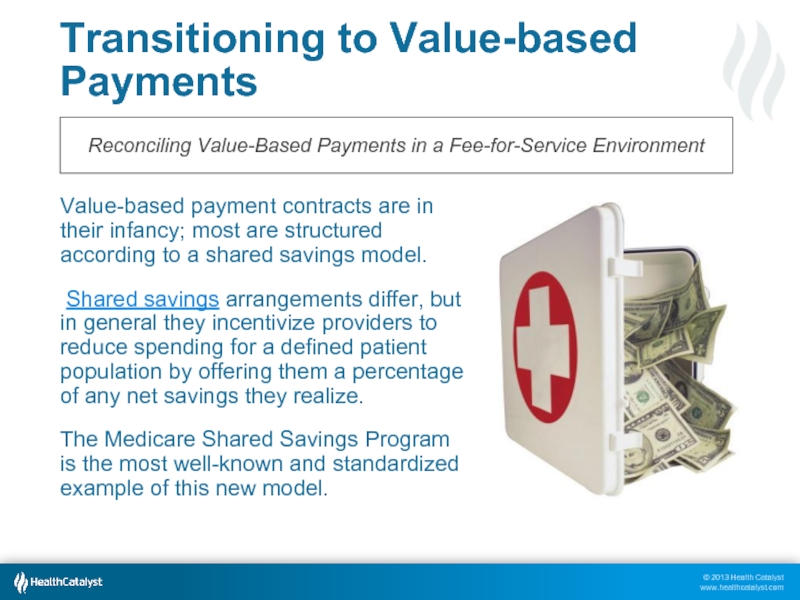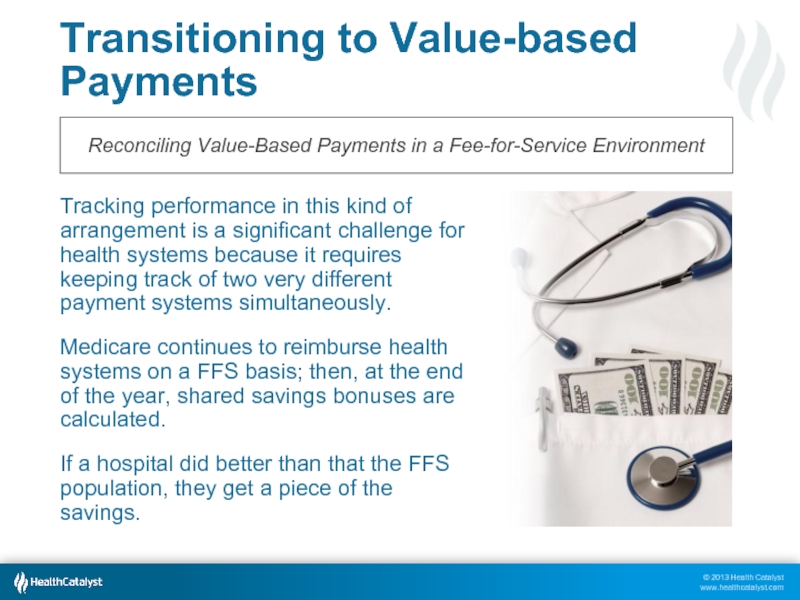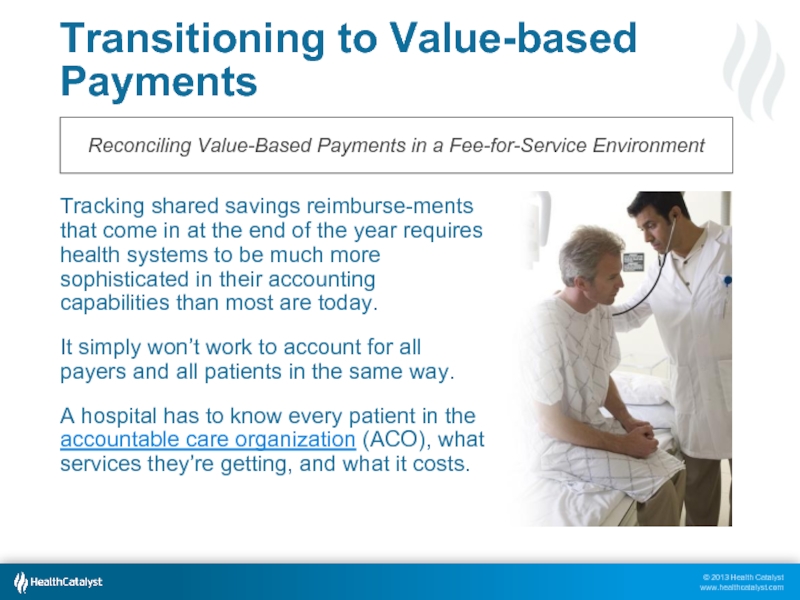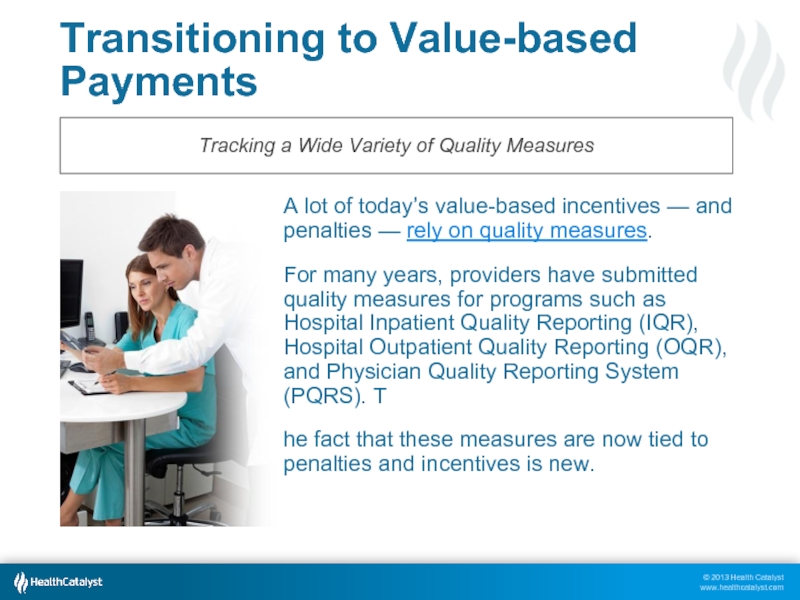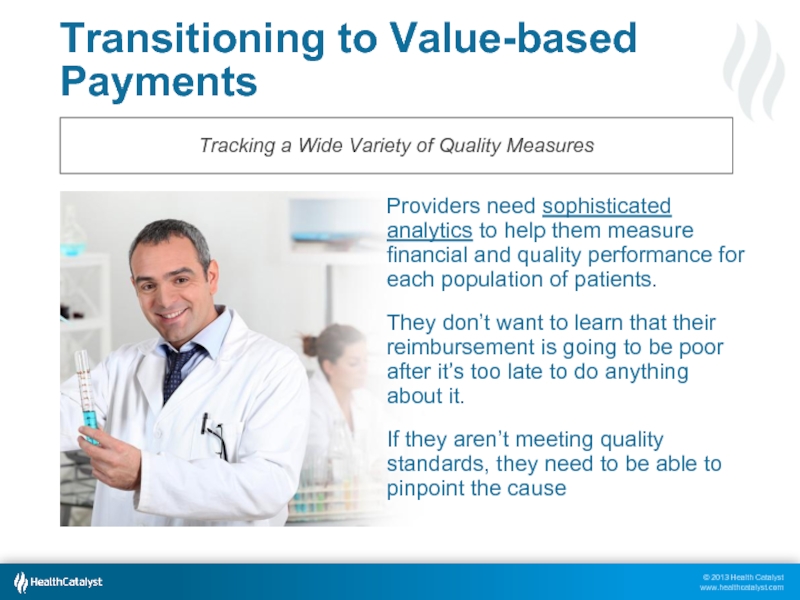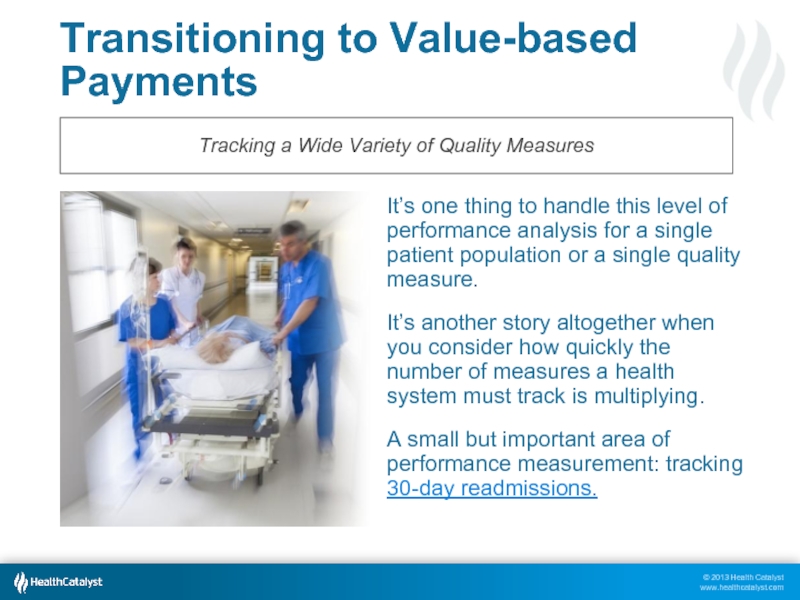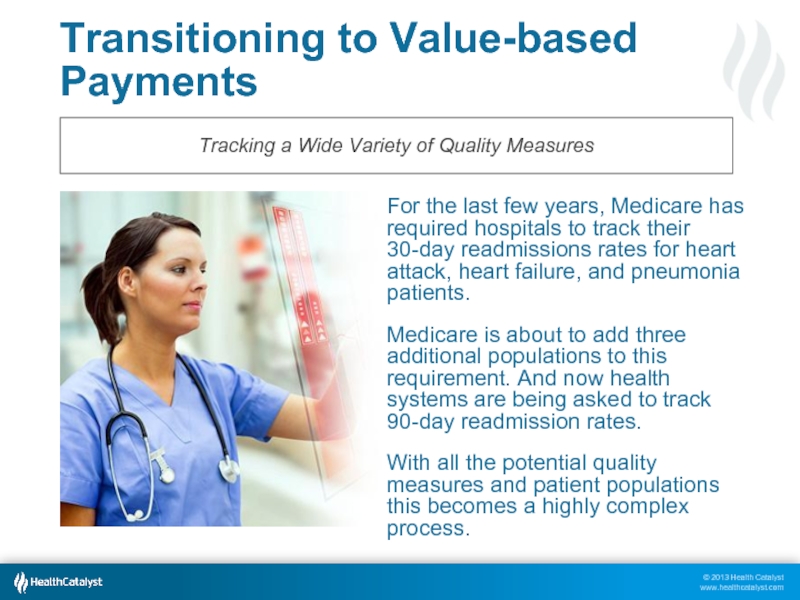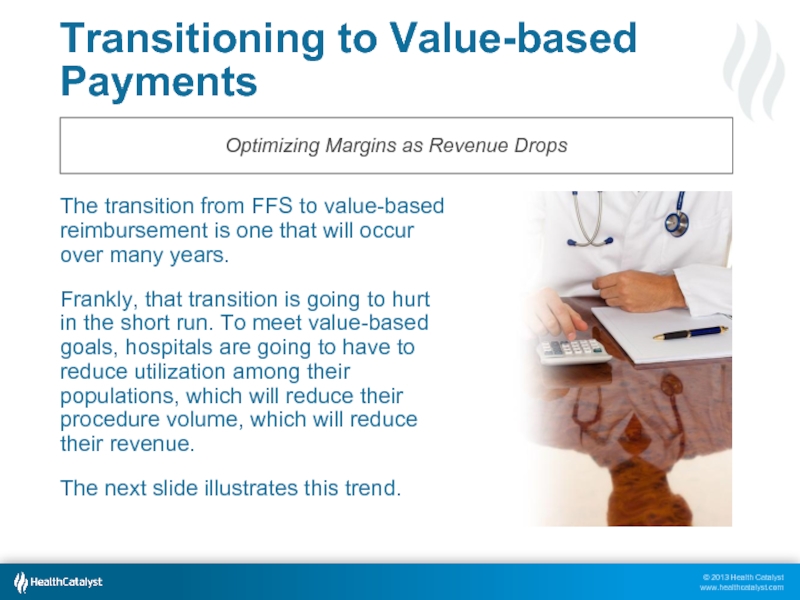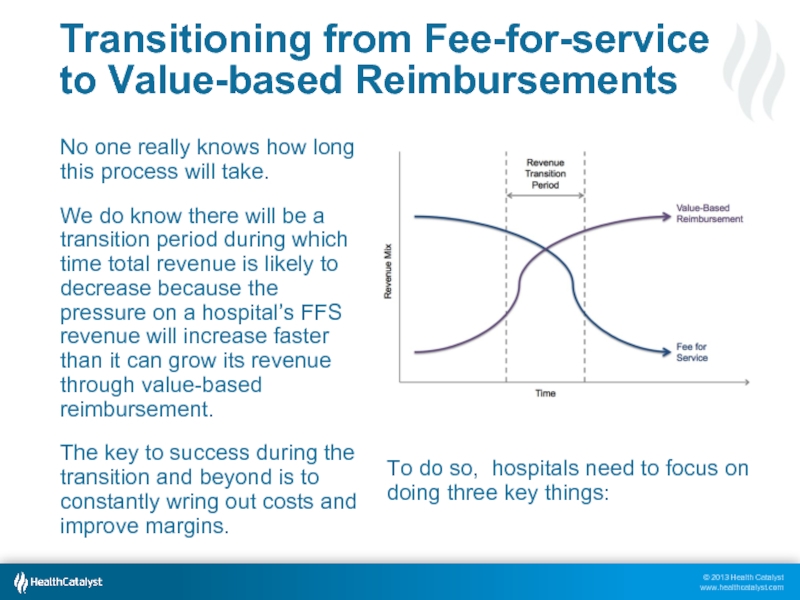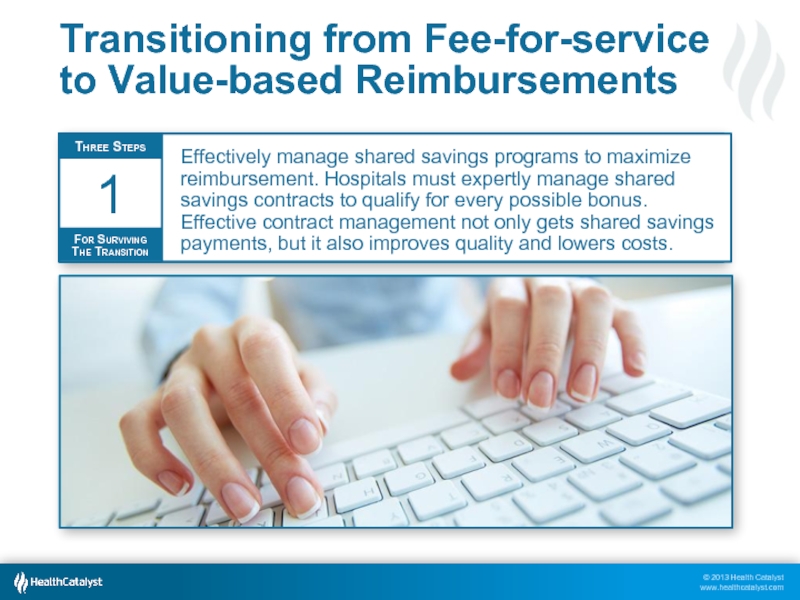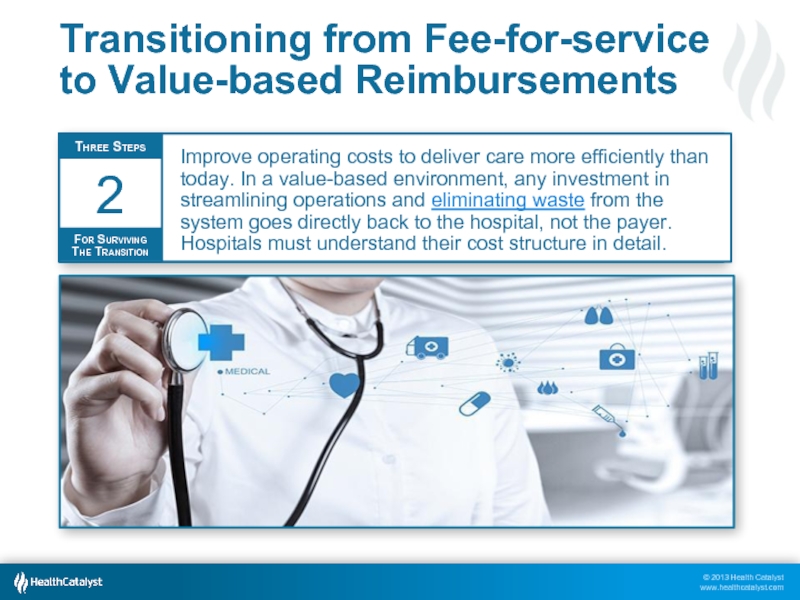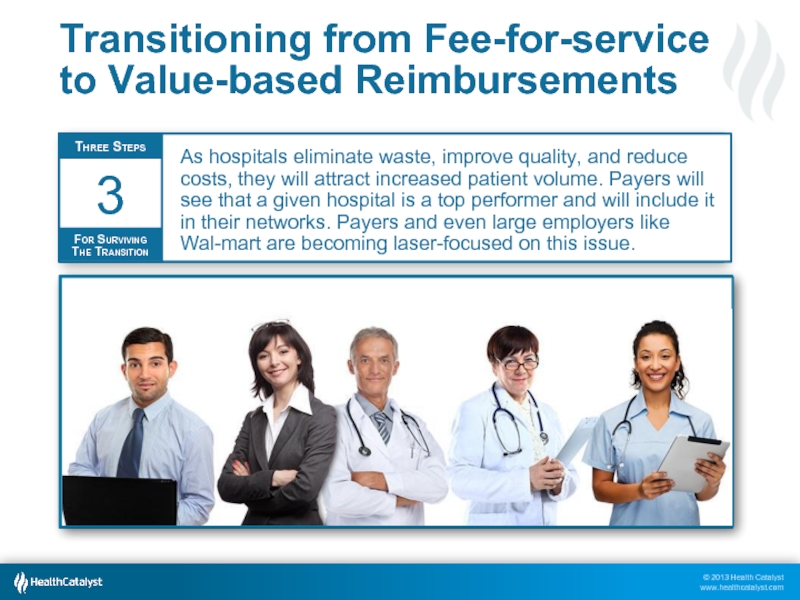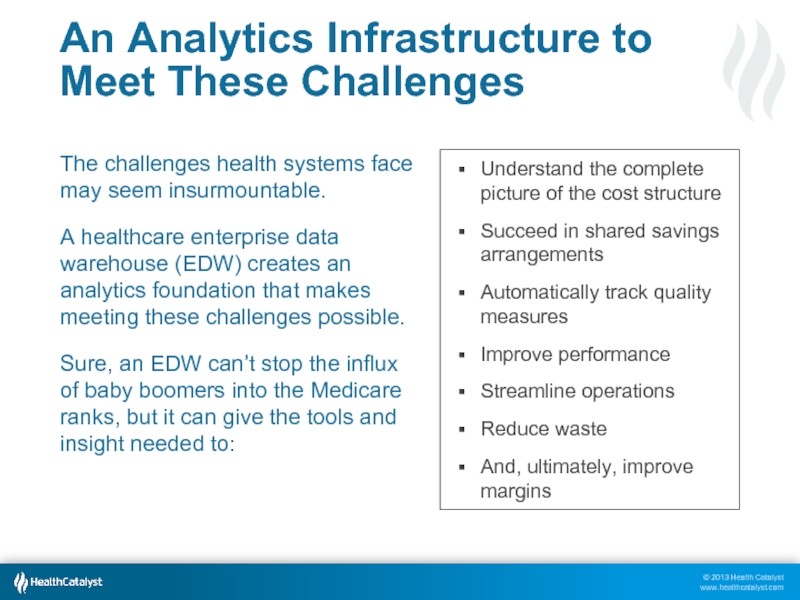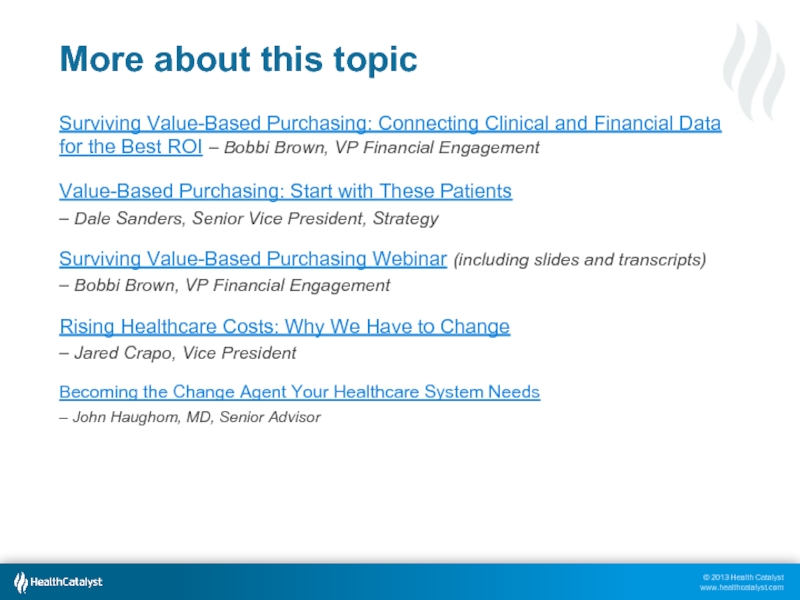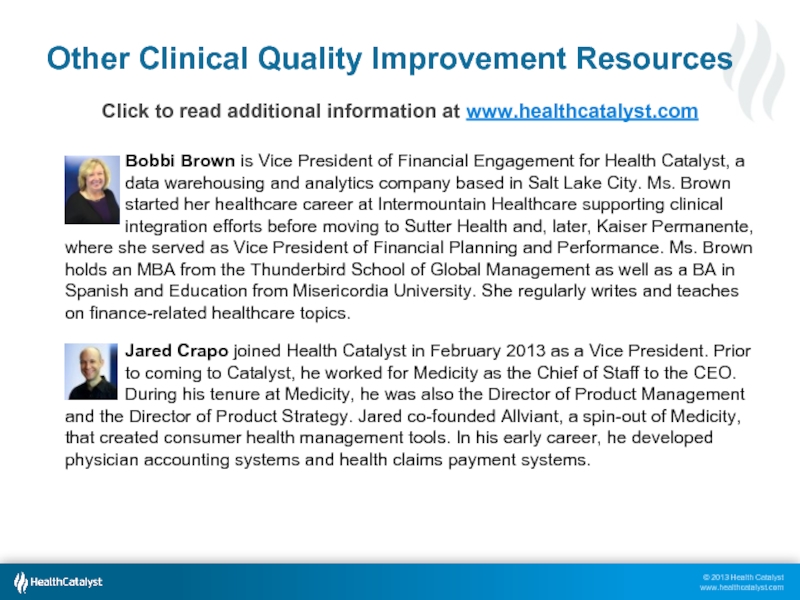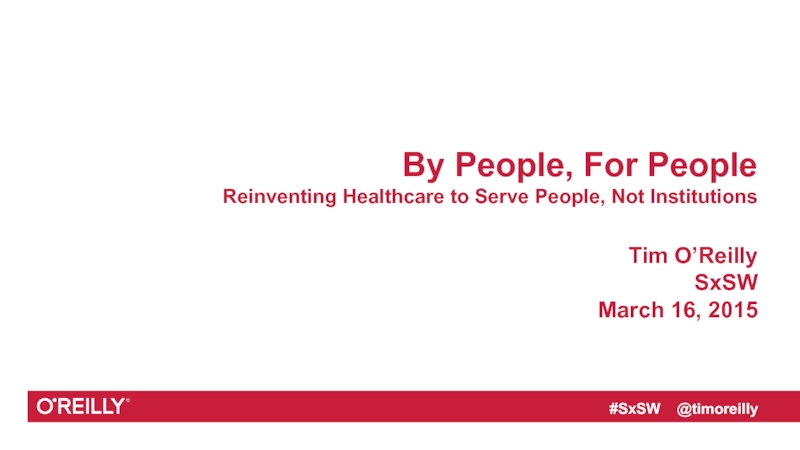- Главная
- Разное
- Дизайн
- Бизнес и предпринимательство
- Аналитика
- Образование
- Развлечения
- Красота и здоровье
- Финансы
- Государство
- Путешествия
- Спорт
- Недвижимость
- Армия
- Графика
- Культурология
- Еда и кулинария
- Лингвистика
- Английский язык
- Астрономия
- Алгебра
- Биология
- География
- Детские презентации
- Информатика
- История
- Литература
- Маркетинг
- Математика
- Медицина
- Менеджмент
- Музыка
- МХК
- Немецкий язык
- ОБЖ
- Обществознание
- Окружающий мир
- Педагогика
- Русский язык
- Технология
- Физика
- Философия
- Химия
- Шаблоны, картинки для презентаций
- Экология
- Экономика
- Юриспруденция
The Key to Transitioning from Fee-for-Service to Value-Based ReimbursementBy Bobbi Brown and Jared Crapo презентация
Содержание
- 1. The Key to Transitioning from Fee-for-Service to Value-Based ReimbursementBy Bobbi Brown and Jared Crapo
- 2. Shifting Revenue Mix The Rise of Medicare
- 3. Shifting Revenue Mix The Rise of Medicare
- 4. Transitioning to Value-based Payments The transition from
- 5. Transitioning to Value-based Payments Value-based payment contracts
- 6. Transitioning to Value-based Payments Tracking performance in
- 7. Transitioning to Value-based Payments Tracking shared savings
- 8. Transitioning to Value-based Payments A lot of
- 9. Transitioning to Value-based Payments Providers need sophisticated
- 10. Transitioning to Value-based Payments It’s one thing
- 11. Transitioning to Value-based Payments For the last
- 12. Transitioning to Value-based Payments The transition from
- 13. Transitioning from Fee-for-service to Value-based Reimbursements No
- 14. Transitioning from Fee-for-service to Value-based
- 15. Transitioning from Fee-for-service to Value-based
- 16. Transitioning from Fee-for-service to Value-based
- 17. An Analytics Infrastructure to Meet These Challenges
- 18. More about this topic Surviving Value-Based Purchasing:
- 19. Other Clinical Quality Improvement Resources Click to
Слайд 1The Key to Transitioning from Fee-for-Service to Value-Based Reimbursement By Bobbi Brown
Слайд 2Shifting Revenue Mix
The Rise of Medicare and Medicaid
The first hospital challenge
Слайд 3Shifting Revenue Mix
The Rise of Medicare and Medicaid
We’ve known for a
We expect this trend to continue as the boomers continue to age — and as the Medicaid expansion authorized in the Affordable Care Act is fully implemented.
Слайд 4Transitioning to Value-based Payments
The transition from the fee-for-service (FFS) reimbursement system
Visit value-based purchasing for expanded information on this topic.
Слайд 5Transitioning to Value-based Payments
Value-based payment contracts are in their infancy; most
Shared savings arrangements differ, but in general they incentivize providers to reduce spending for a defined patient population by offering them a percentage of any net savings they realize.
The Medicare Shared Savings Program is the most well-known and standardized example of this new model.
Reconciling Value-Based Payments in a Fee-for-Service Environment
Слайд 6Transitioning to Value-based Payments
Tracking performance in this kind of arrangement is
Medicare continues to reimburse health systems on a FFS basis; then, at the end of the year, shared savings bonuses are calculated.
If a hospital did better than that the FFS population, they get a piece of the savings.
Reconciling Value-Based Payments in a Fee-for-Service Environment
Слайд 7Transitioning to Value-based Payments
Tracking shared savings reimburse-ments that come in at
It simply won’t work to account for all payers and all patients in the same way.
A hospital has to know every patient in the accountable care organization (ACO), what services they’re getting, and what it costs.
Reconciling Value-Based Payments in a Fee-for-Service Environment
Слайд 8Transitioning to Value-based Payments
A lot of today’s value-based incentives — and
For many years, providers have submitted quality measures for programs such as Hospital Inpatient Quality Reporting (IQR), Hospital Outpatient Quality Reporting (OQR), and Physician Quality Reporting System (PQRS). T
he fact that these measures are now tied to penalties and incentives is new.
Tracking a Wide Variety of Quality Measures
Слайд 9Transitioning to Value-based Payments
Providers need sophisticated analytics to help them measure
They don’t want to learn that their reimbursement is going to be poor after it’s too late to do anything about it.
If they aren’t meeting quality standards, they need to be able to pinpoint the cause
Tracking a Wide Variety of Quality Measures
Слайд 10Transitioning to Value-based Payments
It’s one thing to handle this level of
It’s another story altogether when you consider how quickly the number of measures a health system must track is multiplying.
A small but important area of performance measurement: tracking 30-day readmissions.
Tracking a Wide Variety of Quality Measures
Слайд 11Transitioning to Value-based Payments
For the last few years, Medicare has required
Medicare is about to add three additional populations to this requirement. And now health systems are being asked to track 90-day readmission rates.
With all the potential quality measures and patient populations this becomes a highly complex process.
Tracking a Wide Variety of Quality Measures
Слайд 12Transitioning to Value-based Payments
The transition from FFS to value-based reimbursement is
Frankly, that transition is going to hurt in the short run. To meet value-based goals, hospitals are going to have to reduce utilization among their populations, which will reduce their procedure volume, which will reduce their revenue.
The next slide illustrates this trend.
Optimizing Margins as Revenue Drops
Слайд 13Transitioning from Fee-for-service to Value-based Reimbursements
No one really knows how long
We do know there will be a transition period during which time total revenue is likely to decrease because the pressure on a hospital’s FFS revenue will increase faster than it can grow its revenue through value-based reimbursement.
The key to success during the transition and beyond is to constantly wring out costs and improve margins.
To do so, hospitals need to focus on doing three key things:
Слайд 14
Transitioning from Fee-for-service to Value-based Reimbursements
Effectively manage shared savings programs to
Слайд 15
Transitioning from Fee-for-service to Value-based Reimbursements
Improve operating costs to deliver care
Слайд 16
Transitioning from Fee-for-service to Value-based Reimbursements
As hospitals eliminate waste, improve quality,
Слайд 17An Analytics Infrastructure to Meet These Challenges
The challenges health systems face
A healthcare enterprise data warehouse (EDW) creates an analytics foundation that makes meeting these challenges possible.
Sure, an EDW can’t stop the influx of baby boomers into the Medicare ranks, but it can give the tools and insight needed to:
Understand the complete picture of the cost structure
Succeed in shared savings arrangements
Automatically track quality measures
Improve performance
Streamline operations
Reduce waste
And, ultimately, improve margins
Слайд 18More about this topic
Surviving Value-Based Purchasing: Connecting Clinical and Financial Data
Value-Based Purchasing: Start with These Patients
– Dale Sanders, Senior Vice President, Strategy
Surviving Value-Based Purchasing Webinar (including slides and transcripts)
– Bobbi Brown, VP Financial Engagement
Rising Healthcare Costs: Why We Have to Change
– Jared Crapo, Vice President
Becoming the Change Agent Your Healthcare System Needs
– John Haughom, MD, Senior Advisor
Слайд 19Other Clinical Quality Improvement Resources
Click to read additional information at www.healthcatalyst.com
Bobbi Brown is Vice President of Financial Engagement for Health Catalyst, a data warehousing and analytics company based in Salt Lake City. Ms. Brown started her healthcare career at Intermountain Healthcare supporting clinical integration efforts before moving to Sutter Health and, later, Kaiser Permanente,
where she served as Vice President of Financial Planning and Performance. Ms. Brown holds an MBA from the Thunderbird School of Global Management as well as a BA in Spanish and Education from Misericordia University. She regularly writes and teaches on finance-related healthcare topics.
Jared Crapo joined Health Catalyst in February 2013 as a Vice President. Prior to coming to Catalyst, he worked for Medicity as the Chief of Staff to the CEO. During his tenure at Medicity, he was also the Director of Product Management
and the Director of Product Strategy. Jared co-founded Allviant, a spin-out of Medicity, that created consumer health management tools. In his early career, he developed physician accounting systems and health claims payment systems.
